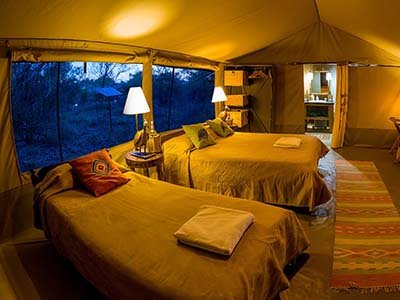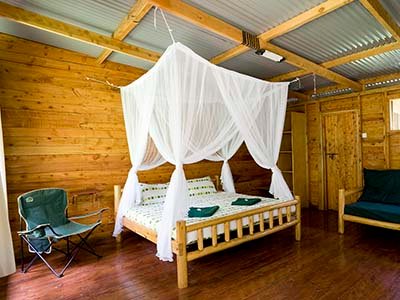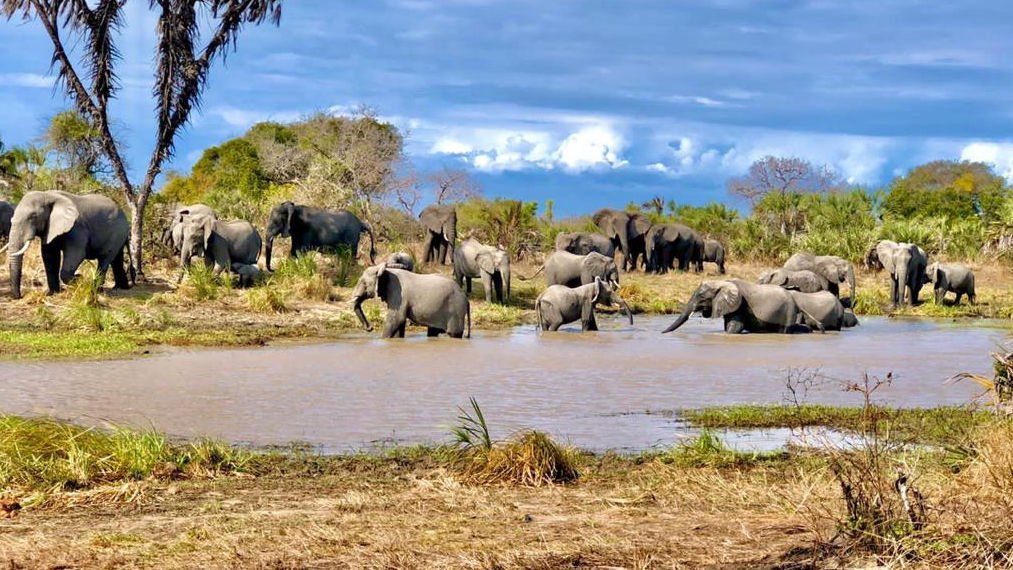Saadani National Park
Saadani National Park became Tanzania’s thirteenth National Park in 2005. Originally it had been a game reserve since 1962. The Saadani ecosystem, which spans 1,100 square kilometres, was created as a consequence of the addition of various additional regions to the park during the 1990s (around 15 km shoreline). It covers 69 kilometres from south to north. The park is mostly at sea level due to its elevation. Despite having a 350 m peak, most elevations are a little higher than 40 m.
Saadani is a unique oasis where beach life and forest coexist. This offers you the chance to not only jump into the Indian Ocean right after your safari but also to be immersed in a rare display of both marine and terrestrial flora and animals in a breathtaking natural environment.
The only wildlife refuge in Tanzania that borders the Indian Ocean is Saadani. The old Saadani game reserve, the former Mkwaja ranch region, the Wami River, and the Zaraninge Forest are all included in this area’s well-preserved environment. The park’s borders are studded with several communities. The community of Saadani itself previously served as an important harbour and hub for the trade of slaves in East Africa. There are about 800 people living there in a tiny Swahili community, and fishing is their primary source of income.
Rare migrating birds that enjoy the coast will be observed by birdwatchers.
The various coastal vegetation zones stretch from the palm-filled shoreline, through the tidal mangrove forest that acts as a barrier between the water and the land, to the bank of the Wami River, where the enormous sycamore fig may be found. The huge grassy region near the tourist office is called “Serengeti Ndogo” (Small Serengeti), and meets up to expectations. Its semi-open forests roughly resemble Selous Game Reserve
Wildlife in Saadani National Park
In Saadani, crab and elephant coexist, and a lion’s roar just could ruin your tan. There are all of the expected suspects, including wildebeest, buffalo, elephant, zebra, warthog, giraffe, and waterbuck. However, during your Jeep or foot safari, you also have a good possibility of photographing many species of the big-eyed Rondo Galago, hartebeest, and the elusive sable antelope. Although the leopard, lion, and spotted hyena may be more difficult to locate, this just increases the delight of a sighting.
The expansive grassland, known as “Serengeti Ndogo” (Small Serengeti), lives true to its name.
The enjoyment will undoubtedly be enhanced by taking a boat on the Wami River, where you may see flamingos, hippopotamuses, and crocodiles up close. The uncommon migratory birds that enjoy the coast, such as many species of Eurasian oystercatcher, sandpipers, and the common greenshank, will also be a delight for bird lovers. You may experience even more unique views on the beach, including green turtle nesting – Saadani’s beaches are among Tanzania’s greatest nesting locations — with humpback whales performing in the Indian Ocean beyond.
Tides: Spring tides may spill inland up to 1.5 metres. With year-round average temperatures of 25 to 27 °C (30 °C during the day, 20 to 24 °C at night), Saadani has a tropical, hot climate.
The dry season runs from July to September, while the rainy season runs from November to May. (with less rain from December to February).
Best Time to Visit Saadani National Park
June through September is the ideal time to visit.
Both air and roads go to the park.
Through the following route by car: Dar es Salaam—Chalinze—Mandera Village (excellent tarmac road; 160 km; 2-3 hours); next, Mandera Village—Mvave Gate—Saadani National Park tourist office (rough road; 65 km; 2 hours).
120 kilometres on a dirt road from Tanga Town to Pangani to Mkwaja Gate takes between three and five hours.
Bagamoyo, Saadani, and Dar es Salaam Air: From Dar es Salaam, Zanzibar, and other significant cities, a number of safari firms provide private flights.
Accommodation in Saadani National Park
Bandas, a rest house, campsites, and a private lodge are all located within the park. Contact the Park headquarters to make reservations for bandas, rest houses, and campsites. A lodge outside the park (close to the border).
Things to do in Saadani National Park
Game drives, escorted hikes, bird viewing, boat tours, sunbathing, and visiting the fishing town of Saadani, which formerly served as a thriving commercial hub, are all popular activities.



